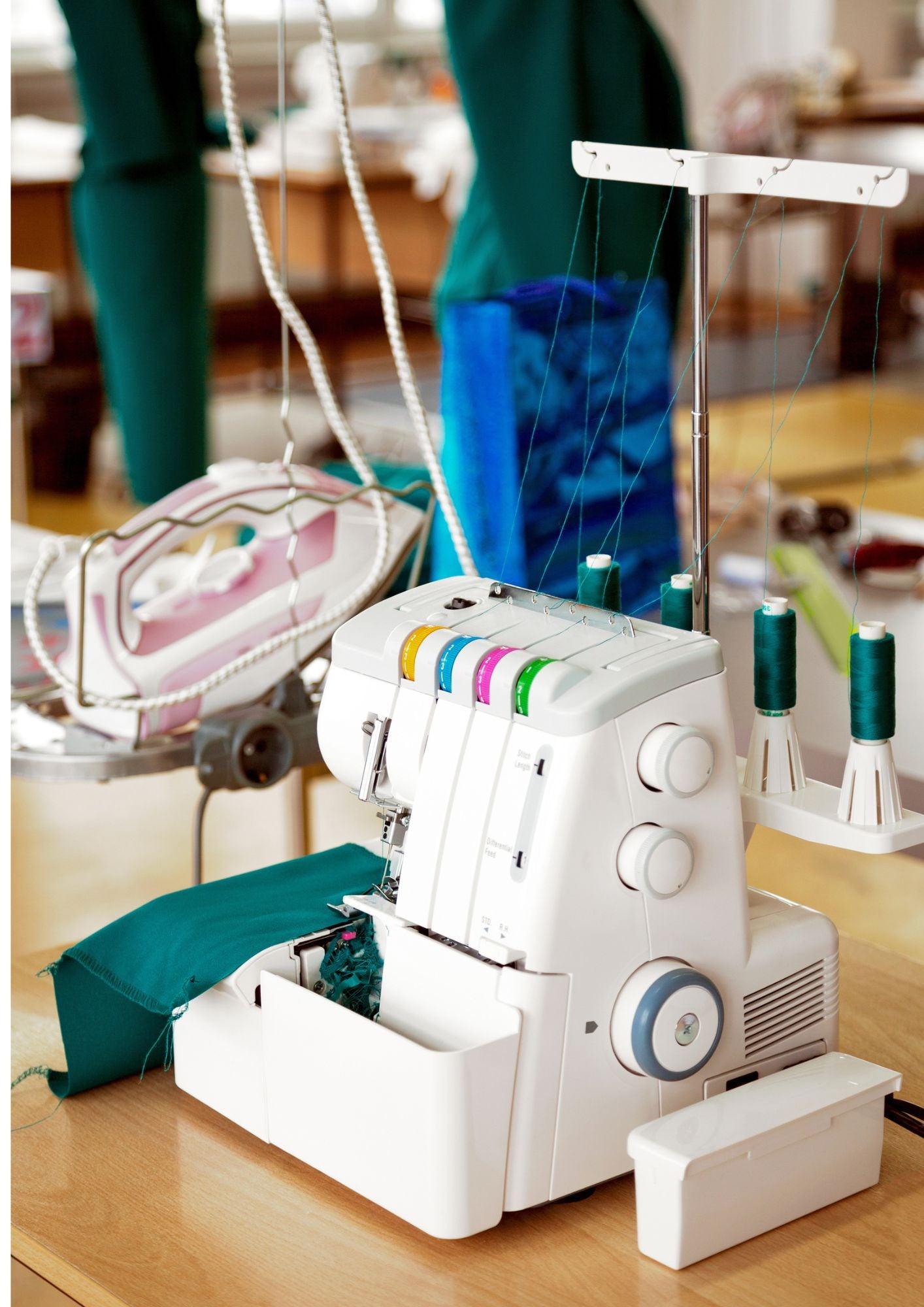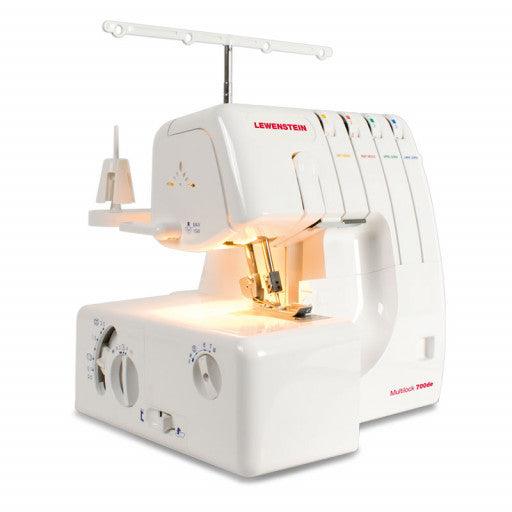table of contents:
What is a twin needle sewing machine?
Explore new horizons in the art of sewing with our recent article featuring the twin needle . Discover how this small accessory can add a touch of sophistication to your creations while making certain steps in the sewing process easier.
The twin needle will replace your standard needle on your sewing machine. It consists of two identical needles joined by a bar between them and a single shank, as shown in the image below.

How to use a double needle?
The twin needle is an often underestimated, yet extremely valuable accessory in the world of sewing. It makes it easy to achieve a professional, beautiful , and clean finish, while maintaining the elasticity of stretchy fabrics. Whether you're passionate about sewing or simply curious to try something new, this article will explain how to use a twin needle sewing machine , what it's used for, and why you should definitely add it to your tool kit . If you're looking for a concrete example , an explanatory video is available to accompany this tutorial and make it easier to understand.
What is a double needle used for?
If you've ever wondered what a twin needle sewing machine is for, you've come to the right place. This amazing little piece of kit is actually a very useful product for many sewing projects, especially when working with stretch fabrics like jersey or lycra.
The twin needle consists of two identical needles, fixed on a single bar with a single heel , which makes it compatible with the majority of classic sewing machines provided that the model accepts this option . It is simply installed in place of a universal needle, and allows two perfectly straight parallel lines to be made in a single pass.
It is ideal for preventing hems from bunching or seams from breaking, especially on stretchy fabrics. On the right side of the fabric, you get a nice , clean , even finish; on the wrong side , the stitching forms a zigzag stitch , which helps maintain the fabric's flexibility and natural elasticity. This finish is often used for t-shirt hems, sleeve edges, or sportswear.
However, you must correctly position the upper thread spool, often in duplicate, and thread each thread into one of the needles. It is also important to adjust the tension of your machine to avoid any sewing or folding problems .
Another tip: by using two threads of different colors , you can play with contrasts and add a beautiful and decorative touch to your creations. It's a perfect option to personalize a pattern , and explore a different way of sewing.
If you have chosen a specific twin needle reference , check the distance between the two needles (2 mm, 4 mm, etc.), as this will have an impact on the final result. Some twin needles are designed to sew only in a straight line , while others can tolerate slight zigzag movements – however, be careful not to damage the plate of your machine.
Finally, to better understand its use, we advise you to watch a video tutorial on the subject: nothing like a visual explanation to master this technique.
How to install a double needle?
To set up a twin needle sewing machine , you need to follow a few simple but essential steps. Make sure you have your machine's instruction manual handy. Start by removing the single needle and inserting the twin needle into the designated position, making sure the flat side of the shank is facing backward. If you are using an electronic machine , the sewing machine setting may require checking the stitch width to avoid breaking the needle . Be careful not to choose a decorative stitch that is too wide , as this could damage the second needle .
Next, install the two spools of thread : the first spool on the main spool pin , and the second spool on an auxiliary or additional spool pin (one tip is to use a bobbin placed in a cup ). Pass each thread through the thread guide and take-up lever , following the path indicated on your machine , then thread each thread into the corresponding needle using a needle threader or manually, depending on the size of the double-eyed needle . Finally, place the threads towards the back , under the presser foot , to avoid tangles and ensure smooth sewing.
Step 1: Remove your standard needle and place your twin needle sewing machine using its shank.
Step 2: Place your first spool on your spool pin, thread your thread through the thread guide as indicated on your machine, remembering to thread it through the thread take-up lever.
Step 3: Do the same with your 2nd spool.
If your spool is too large for the spool pin, place it in a cup as a support, or you can replace one of the two spools with a bobbin.
Step 4: Pass each thread through each needle as shown in the picture below and then put them in the background so they don't get in the way when sewing.

And there you have it, you can start sewing your fabrics! Here is the result you will get with the straight stitch .


What fabrics can be sewn with a double needle?
The twin needle is particularly suitable for stretchy fabrics , such as jersey , knits , or stretch fabrics . It allows you to sew without distorting the fabric while maintaining its elasticity , which is essential for hemming a T-shirt or knit dress . It is also suitable for fine fabrics , such as cotton or gauze , and can be used for bias binding , decorative details , or flatlock stitching on warp and weft garments . If you want to knit in the round or simulate circular knitting , you can even combine it with knitting needles or double-pointed needles for hybrid projects.
What stitches can be made with a double needle?
With a twin needle sewing machine, you can make several types of stitches, mainly straight stitch, zigzag stitch , decorative stitches , parallel topstitching or even make a hem depending on the setting of your sewing machine . The straight stitch is perfect for finishing edges , while the zigzag stitch provides a more elastic and flexible touch. This technique is ideal for sewing elastic hems , parallel topstitching , or even for personalizing creations by topstitching patterns . You can also play with the size of the twin needle depending on the desired result: a small size for fine fabrics, a larger one for thicker fabrics.
Double needle vs. single needle: what are the differences?
The difference between a twin needle and a single needle is essentially functional. A single needle is versatile, but it does not allow for parallel topstitching . A twin needle , on the other hand, offers a much more professional finish, a big time saver , and controlled elasticity on suitable fabrics. Its advantage is that it allows for elastic sewing , while maintaining a clean and neat appearance on the right side. If you are looking to sew jersey or sew with ease on stretch , it remains the tool of choice.
Double needle for what type of sewing?
The twin needle is perfect for sewing hems on t-shirts , leggings , or sportswear . It can also be used for decorative projects , for round seams , or for invisible finishes on fitted garments . It can even be used for neckline seams , pockets or sleeves , especially when you want a symmetrical and elegant finish. For circular knitting enthusiasts, using a parallel knitting needle can allow for original round knitted projects.
Conclusion
Whether you're a beginner or an experienced seamstress , learning how to use a twin needle sewing machine is an essential step in your progression. This small, easy-to-install tool will give you great results , while opening the door to many creative possibilities . If you still have doubts or installation problems , don't hesitate to consult your machine manual , watch our explanatory video , or read other tips and feedback on our blog. You'll see, once you get the hang of it, it's super practical !













































Leave a comment
All comments are moderated before being published.
This site is protected by hCaptcha and the hCaptcha Privacy Policy and Terms of Service apply.